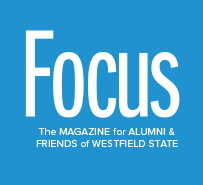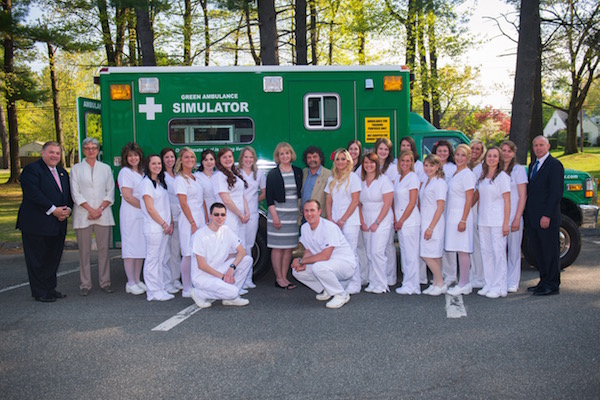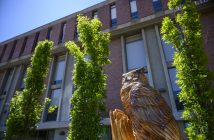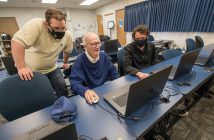Almost a year ago, the University received a rather unusual gift. Dedicated to education around saving lives, Roberta Green and her husband, Ralph Genella, gave a green ambulance to the Nursing Program as a teaching tool. Complete with equipment that includes two simulation patients—an adult male and an infant—the vehicle will now serve as a teaching tool for students.
Called the “Green Ambulance,” the name was a little more appropriate when the gift was received—before the ambulance’s green color was covered in University blue paint—but it still works, because the gift honors Green’s first husband, David Green, who died of a heart attack at the age of 44.
In addition to honoring her late husband, the gift also honors work that Green and Genella did together for many years. The Granby residents founded a company called Green Ambulance Simulator Inc. in 2009 with an ambulance they purchased from the Granville Fire Department and outfitted with new technology and simulators.
In it, they travelled around the Pioneer Valley, educating first responders, paramedics, emergency medical technicians and hospitals that might not otherwise have access to such expensive technology on life-saving measures specifically related to cardiac arrest.
Genella is a former medic who enjoyed using his experience in the military as a jumping-off point for teaching people about the importance of proper emergency medical procedure. So, when he and Green gradually brought their business to a close over the past few years, they wanted to be sure their ambulance would continue to be used for educational purposes, hence the gift to the University.
The ambulance will continue to serve the purpose of education, as Westfield State University students will be able to learn how to handle real-life crisis situations in a controlled environment.
Connie Blake, an assistant professor of nursing who, along with Marcia Scanlon, assistant nursing professor, helped to facilitate the reception of Genella and Green’s donation, said the couples’ “whole passion was about educating the public.”
According to Blake, the ambulance will be used to develop assessment and medical-surgical skills. “We will use it for community demonstrations, including summer programs for high school students interested in health care fields such as nursing, medicine and emergency medical training,” she says.
Next spring, the ambulance will also serve a purpose that involves public health—but not in an emergency sense. Black and Scanlon hope to organize a food drive, in which the ambulance will be used to collect, and then deliver, the food.
The hope is that the spring food and toiletries drive will allow the Westfield schools to stockpile food that they can distribute to students during the summer months, when many families and children don’t have access to school lunches.




